4 Types of Rats in Oklahoma (With Pictures)
-
Lindsey Lawson
- Last updated:

No one wants to have a run-in with a wild rat inside their home. While rats are very interesting creatures that are often kept as pets, wild rats are considered pests and can easily spread disease and cause damage to houses and other structures.
Rats are found all over the world but there are many different species with different habitat preferences and behaviors. In this article, we will learn all about the types of rats you can find in Oklahoma, how to identify them, and what you can expect from each one. We’ll also talk more about what makes rats so interesting and give you some tips and tricks on how to prevent and eliminate infestations in your home or yard.

The 4 Types of Rats in Oklahoma
1. Brown Rat
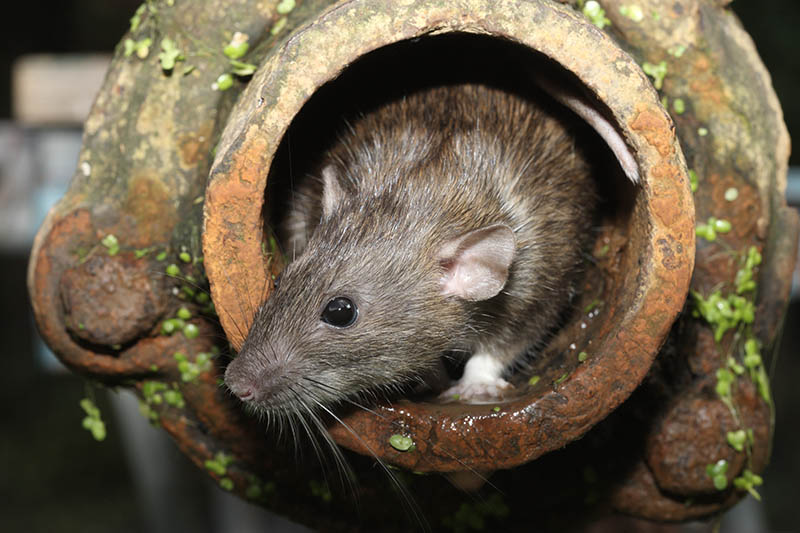
| Scientific Name | Rattus norvegicus |
| Size | Length: 15 – 20 inches
Weight: 5 – 18 ounces |
| Color | Gray to brown |
| Distribution | Throughout Oklahoma |
Brown rats are the largest and most widespread rat species in Oklahoma. They are commonly referred to by several names including Norway rats, sewer rats, and street rats. They are heavy-bodied and long, reaching up to 20 inches in length including the tail. These rats are gray to brown with light gray to white underbellies.
Brown rats are not native to the United States but are believed to have originated in China. They made their way across the globe on ships, arriving in the United States during the 1700s. They are now found on every continent except Antarctica.
This species used to live primarily in the forest but is now most common wherever humans inhabit, especially in urban environments. They live anywhere that provides them with regular food, water, and shelter. They are often seen in sewers and tunnels, inside wall cavities, or under the floorboards of buildings and structures.
2. Black Rat
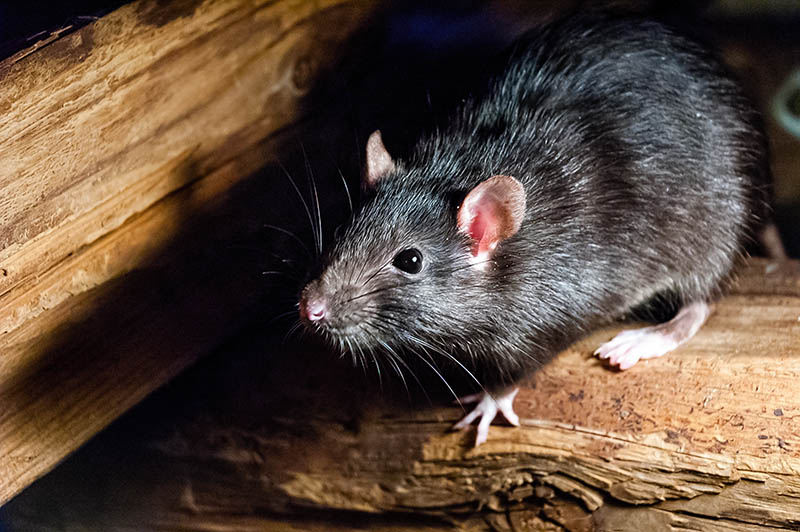
| Scientific Name | Rattus rattus |
| Size | Length: 12-15 inches
Weight: 2.5 -8 ounces |
| Color | Light brown to black |
| Distribution | Throughout Oklahoma |
Black rats are commonly called roof rats in Oklahoma. They are a species slightly smaller than brown rats and reach 12 to 15 inches in total length. They are light brown to black with a lighter-colored underbelly and typically weigh anywhere from 2.5 to 8 ounces.
This is another species that is not native to North America but made its way here by ship. It is believed black rats originated in Southeast Asia and India, where they are considered sacred in certain areas. They are now found throughout the world but remain limited to warmer climates, unlike the brown rat.
Black rats have a more restricted diet and are less tolerant of weather extremes than brown rats. They have adapted to a range of habitats surrounding human settlement, especially residential areas, warehouses, and barns but they also regularly inhabit forests and are great climbers. This species is especially troublesome for farmers, as they are known for feeding on a wide variety of crops and seeds.
3. Eastern Woodrat
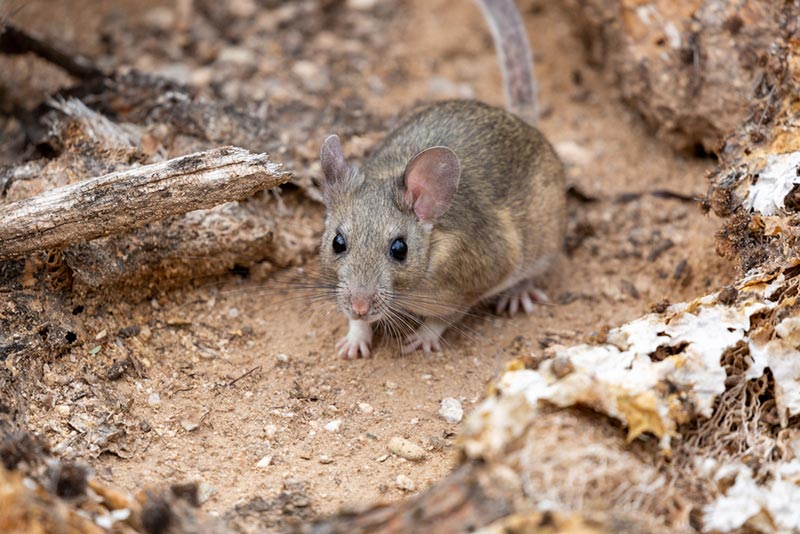
| Scientific Name | Neotoma floridana |
| Size | Length: 12 – 18 inches
Weight: 6-12 ounces |
| Color | Grayish brown |
| Distribution | Central to Eastern Oklahoma |
The Eastern woodrat, or pack rat as some may call it, inhabits densely forested areas but has been known to occupy grasslands, swamps, caves, and other rocky outcrops. This species isn’t much of a nuisance in urban settings and is much more common in rural areas.
They typically aren’t much of a problem in and around human structures unless those structures are heavily rural and within their normal habitat. This species is native to the United States and is found throughout the Southeastern and Midwestern states.
They can be found throughout Central and Eastern Oklahoma, but their numbers wane the further west you go. Eastern woodrats are grayish brown with a light underbelly. They have large eyes and long whiskers and typically reach a length of 12 inches or more. They feed on a variety of nuts, seeds, fungi, buds, stems, roots, fruits, and foliage.
4. Marsh Rice Rat
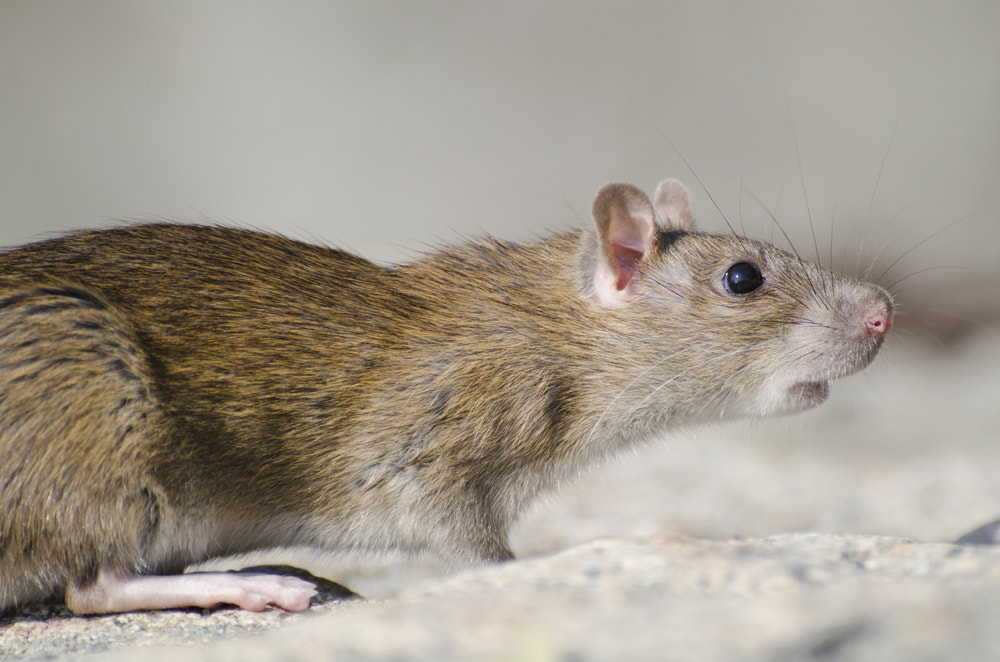
| Scientific Name | Oryzomys palustris |
| Size | Length: Up to 12 inches
Weight: 1.4-2.8 ounces |
| Color | Gray to brown |
| Distribution | Southeastern Oklahoma |
The marsh rice rat is a semi-aquatic rat that is found throughout the Southeastern United States. This rat was first discovered in 1816 in South Carolina and is very rare in Oklahoma. This species has only been observed in the far southeastern and south central areas of the state that provide their desired wetland habitats.
Also referred to as silver rice rats, these medium-size rodents reach a body length of about 5 inches with a tail up to 7 inches. They are gray to brown and resemble black and brown rats, except they are much more lightweight, only reaching 1.4 to 2.8 ounces as adults.
These rats aren’t a bother to humans, as they stick to their wetland habitat feeding on a variety of foods including insects, snails, fish, bird eggs, aquatic plants, and fungi. They often fall prey to various woodland predators like barn owls and hawks and typically live only a year or less in the wild.

The 10 Interesting Facts About Rats That Might Take You by Surprise!
1. Rats Have Excellent Memory
Rats are very clever creatures with an incredible memory. They have proven they can remember and recognize people and other rats they’ve met in the past. They are also able to learn and memorize specific routes to get where they need to be.
2. Rats Are Very Social Creatures
Rats are extremely social creatures that live in colonies and require the company of other rats. They can easily become depressed if they don’t have a companion, which is why it is recommended that those that keep pet rats always have more than one. Not only are they social with one another, but pet rats are also very sociable and develop bonds with their humans.
3. Rats Can Make Great Pets
Rats are intelligent, inquisitive, and very interactive. While no one should take a wild rat and turn them into a pet due to the associated health risks, these creatures are popular in the pet trade and can make wonderful pets.
4. Rats Are Extremely Clean Animals
Rats are often thought of as dirty, creepy creatures that live in sewers. Most people are surprised to learn that these rodents are very clean animals. They spend hours a day grooming themselves, even more than cats.
5. Rats Are Great Swimmers
Rats are excellent, powerful swimmers that can tread water for up to 3 days and can even hold their breath for up to 3 minutes.
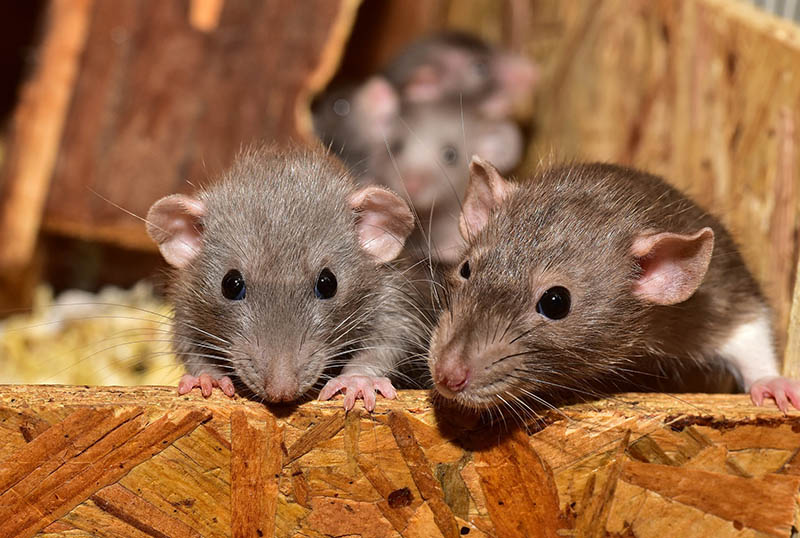
6. Rats Can Be Trained
Rats are very popular pet rodents because they are very easy to train when compared to other species. They are very intelligent, social, and have a great memory, which allows them to learn and remember a variety of tricks. They can even be trained to use a litter box.
7. Rats are Worshipped in Parts of India
Karni Mata temple in Rajasthan, India is a place where rats are worshipped. Thousands of black rats inhabit the temple and are revered as descendants of Karni Mata, who was said to be an incarnation of the Hindu goddess Durga during the 15th century.
8. Rats Are One of the Animals of the Chinese Zodiac
Rats are one of the twelve animals represented in the Chinese zodiac. Those born in the Year of the Rat are considered smart, witty, resourceful, and kind.
9. Rats Have Very Short Lifespans
Regardless of species, rats have incredibly short lifespans. The longest lifespan of your average pet rat is about 2 years, but most species do not live much past 1 year in the wild.
10. Rats Are Found on Every Continent Except for Antarctica
There are species of rat found on every continent in the world except for Antarctica. Certain species have made their way across the globe due to human travel and trade and these invasive creatures manage to reproduce rapidly and become very widespread.
Homeowner’s Guide to Preventing and Eliminating a Rat Infestation
Rats are very intelligent and interesting creatures, but they can also transmit disease, contaminate food, and cause a lot of destruction to homes and other human structures, which is why they are considered pests.
Prevention and elimination of rat infestations have some key differences, so we’ll go over what you can do to prevent rats from entering your home, and what you can do if you already have a rat problem.

Preventing Rat Infestations
If you don’t have a current infestation, or you just recently eliminated one it’s a good idea to start with some preventative measures to keep the rats away from your property. Here are some of the key tips for preventing rats:
Keep Your Home and Property Clear of Food Sources
Rats are going to actively look for easy, recurring food sources and if your home or yard provides this for them, they are bound to stick around and even attract more friends. Clean up food messes in the home quickly and efficiently to prevent them from being drawn in by the scent.
Never leave food out unattended and make sure to throw away any trash or leftovers that won’t be going used. You will also want to make sure your yard is clear of any food sources, which includes things like backyard bird food, which rats will also feed on.
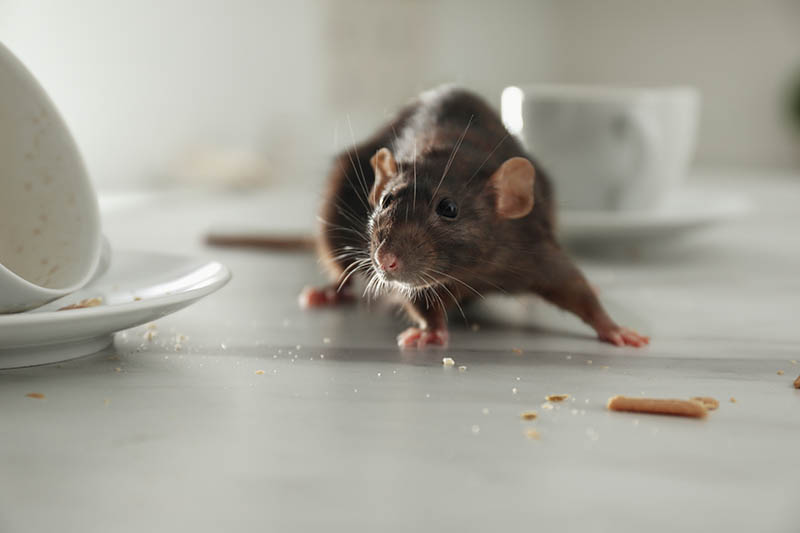
Remove Any Potential Nesting Sites
Food, water, and shelter are all that rats need. If you are making sure you aren’t providing food sources, you should also remove any potential nesting areas. Make sure your yard is free from any debris, clutter, garbage, and leaf litter. Any bushes or shrubs should be planted at least several feet away from any structures since they provide a safe place for rats and mice to hide.
Seal All Holes Inside or Outside Your Home
Have a thorough inspection completed on your home to make sure all holes and potential entry and exit points for rats and mice are sealed off. Check all doors, windows, vents, and any other areas they could potentially use to access the home. Repair any cracks or gaps in the walls or foundation, cover up any exposed insulation that could be used for nesting, and place a cap on the chimney.
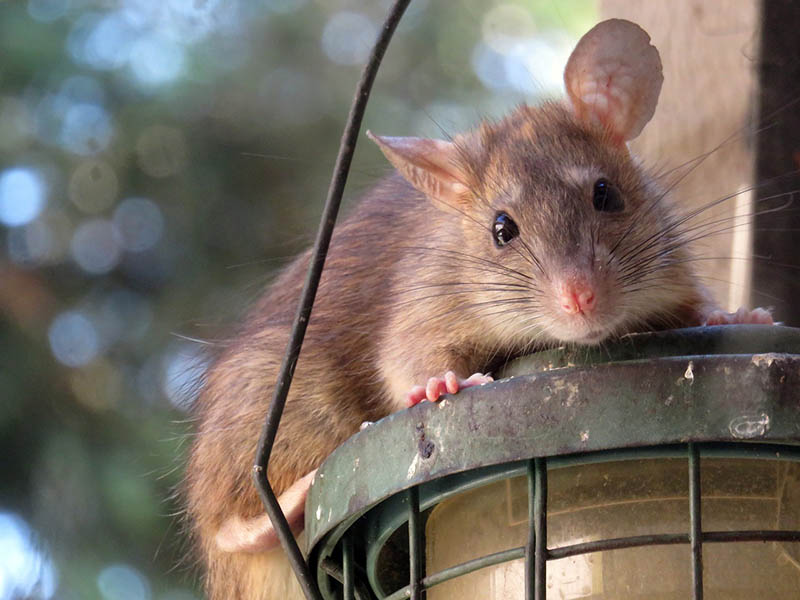
Encourage Predators
Rats fall prey to many predators in the wild including owls, hawks, weasels, bobcats, and snakes. Try not to discourage these predators from your property and they will certainly help you keep your rodent population under control.
Many people don’t like the thought of snakes on their property, but these animals do have any interest in interacting with people and prefer to be left alone. Non-venomous or venomous, if you keep your distance and learn to live in harmony with wildlife, it can be advantageous to everyone.
Adopt a Cat
Cats make great deterrents for rats and will sometimes help you eliminate active infestations by catching any rodents that cross their path. Rats are intelligent though, and they will try to establish a home and circumnavigate around any potential predators.
This isn’t a foolproof deterrent or a decision that should never be done lightly. A pet cat is a lifetime commitment and a companion rather than just an animal used for rodent prevention and control. If you’re a cat lover that is already interested in adding a new four-legged family member though, a new kitty may be able to help you out a bit.

Identifying and Eliminating a Rat Infestation
Identifying an infestation is typically quite easy, as these rodents are not discreet when it comes to making themselves known. You may never see a rat unless the infestation is large.
Infestations of mice and rats are easily distinguished by the size of the droppings if you haven’t seen the rodent in question. Here are some of the common telltale signs that you have a rat infestation:
- Gnaw marks and damage throughout the home or structure
- Strange sounds (especially at night)
- Capsule-shaped rodent droppings
- Nesting materials and debris scattered around
- Noticeable urine odor (large infestations)
- Visibly seeing one or more rats
Eliminating a Rat Infestation
Whether there is a rat infestation within your home or in your yard or garden, you will want to eliminate them as quickly as possible to prevent the spread of disease or risk any further damage that has been done. Here are some of the methods you can use to eliminate an active infestation:
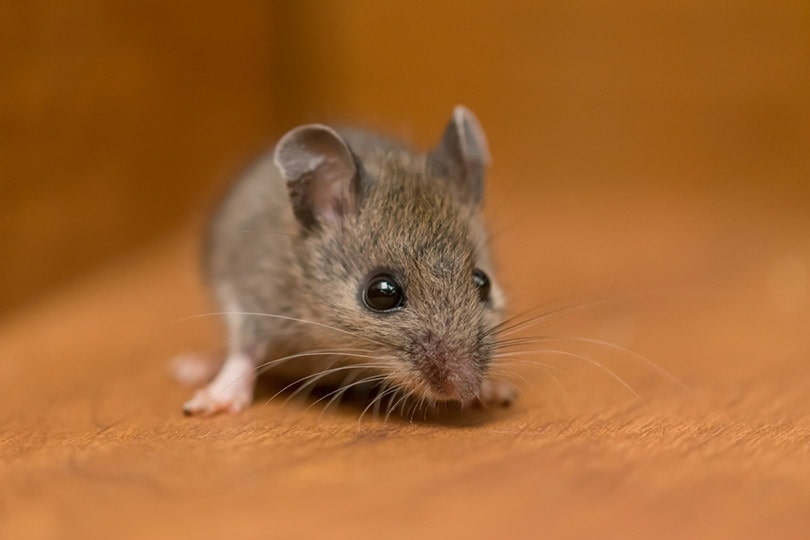
Traps
Trapping is one of the most effective ways to eliminate rats from your home or yard and it allows you to do so without having to use any rodenticide. Some prefer to use deadly traps, while others prefer to use live traps and then transport the rats far from the home and away from any human dwellings. Trapping can yield quick results for smaller infestations, you will just want to make sure that no matter which type of trap you use, you check it often.
Natural Deterrents
Natural deterrents aren’t going to be the most effective approach if you already have an established infestation, especially if the rats are already inhabiting the home. They may be effective at driving out a small infestation that is just beginning, though.
High concentrations of peppermint oil are a great natural deterrent, but a high concentration can be quite overwhelming for the people in the household and pose a potential danger to household pets if ingested or absorbed into the skin.
Crushed pepper or pepper spray can also be used near any rat holes or openings they use to access the home. This will irritate their noses and airways and further discourage them from using these areas. Again, this can also be irritating to people and pets in the household so this should be used with caution.
Contact a Professional
One of the most surefire ways to eliminate rats in your home or yard is by calling a pest management professional. They are trained in how to identify the cause and how the infestation is functioning within your property. Not only will the professionals remove all rats, but they will also provide you with some tips and tricks on how to keep them from coming back.
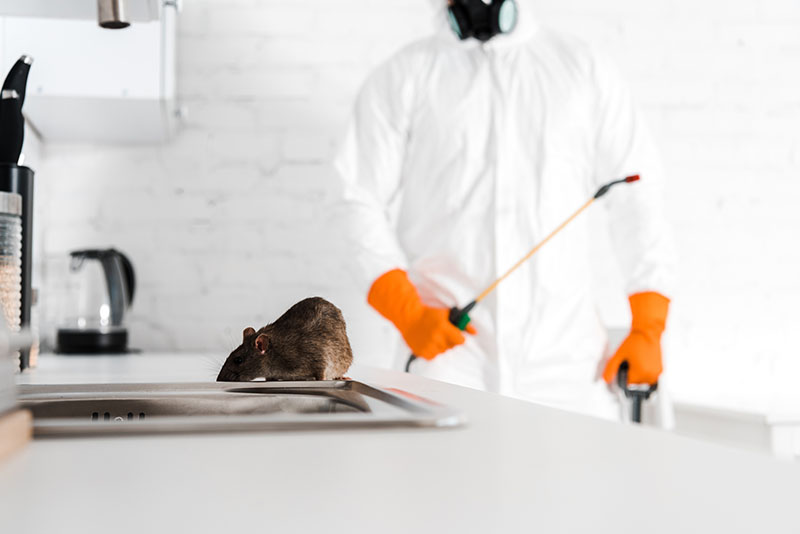
Why It’s Not Recommended to Use Poison
Rodenticides used to be the most popular way to get rid of mice and rats. The use of these chemicals is becoming less and less popular and for good reason. They are highly toxic, not just to rodents, but also to mammals and birds if they are eaten, touched, or even breathed in.
People, pets, and other wildlife can suffer very serious health effects after exposure to rodenticides. Even animals that were to consume a poisoned rat or mouse can be seriously affected by the poison.
This has led the EPA to ban all rat poisons sold in pellet form and limit sales to 1 pound or less rodenticide. Certain states may even have laws in place regarding these rodent baits and poisons to protect the health and safety of humans and other animals. While it may seem like the easiest way to go about handling infestations, trapping is much safer and can be a much less cruel end for the rats or mice.

Conclusion
There are only four species of traditional rat that can be found in the state of Oklahoma. Two of them are native species, while the most observed species (brown rats and black rats) originate in other countries but have been around for centuries. While rats are very fascinating creatures, you certainly don’t want to have an infestation on your hands, so it’s recommended that you follow the tips provided to prevent or eliminate rats from your property.
See also:
- Ojs Library
- Wild Life Department
- Rats Oryzomys
- Npic
- Safe Pest Contol
- Rodenticides
- Research
- Ipm Ucanr
Featured Image Credit: David Hablützel, Pixabay
Contents
